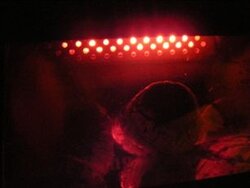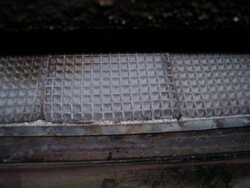Thanks Pyro (and north of 60). Edit: I mean Backwoods Savag, not Pyro - I was looking at your level title (oops)
As for my name, 'goofy' comes from a snow related forum I am a member/moderator of. My real name/handle there is 'goofydatarave', because that was the wording on my first snowboard, many years ago. Nobody likes to type it all out, so I'm pretty much know as 'goofy' there. So, for ease (or maybe because I'm not the shiniest egg in the carton) I am using something similar. Either that, or I'm just a wacky kind of guy.

My current stove is a VC Resolute Acclaim. I've been burning it for about 20 years, but it was in the house when I bought it, so I'm not entirely sure how old it is. It's a great stove, or at least has been until the last year or two. It's pretty much hit its end of life. Only on lever, out of three are still working, and I've probably removed about six pieces of random cast iron that just have fallen into the firebox. It alsoh as a couple of cracks in the firebox (not really a safety issue, because a second enamel coated iron layer is mounted outside the cracked pieces. The back reburner (if that is its name) is now totally exposed and totally hacked up. I considered a rebuild kit, but there is too much else going on that I don't think its worth it at this point. It's gotten to the point where I am buring more wood and getting less heat than in all the prior years.
The VC does have a reburner type setup that, although technically operates a bit different than a cat, pretty much is operated in a similar manner: Build a fire, wait until it is running hot, close down the air intake a lot, and then throw the handle to engage the reburner (kind of a down-draft type mode). So, I'm not really intimidated by the cat operation, because I'm pretty much used to a similar operating procedure.
The three stoves I'm considering initially are the Woodstock Fireview, the Woodstock Keystone, and the DW cats (large and/or xlarge). I can't seem to get excited about the looks of any of the steel cats. I was really leaning towards the DW because I like the looks, like how it is a convection stove, and had excellent luck with my existing VC stove. However, it seems that VC isn't the same company it was when they built my stove, in more ways than one. So, I have started to consider the Woodstock stoves too.
Has anyone burned an old Resolute Acclaim and switched to the DW cat, Fireview or Keystone? How does the heat output compare?
I use my current stove as a sort of baseload heat supply. I burn it pretty much 24/7 for 4 straight months, only relighting it a couple times in that period. The house thermostats are set to 70, so some mornings the oil furnace kicks in to help out (especially when I sleep in). That isn't really a big deal, because the hot water heater runs off the furnace too, and would be running anyway to heat the water (everyone likes taking nice long showers here). The furnace also kicks in on the rare occasion that the wood stove isn't keeping up (only when it is really cold). So, I don't need something that can meet my heating demands 100% of the time, only 80% to 90%. I'm really just looking for something with pretty similar capabilities as the Resolute Acclaim, in regards to heat output and burn times (I'm used to 8 - 10 and sometimes 12 hour runs, without having to use any kindling).
Oops. I'm kind of hijacking my own thread, so back to the original post:
I think I may have figured out what was confusing me. My problem grasping the way a cat works has to do with the fact that the cat is buring at 1000+ degrees, and the cat is after the firebox, so my assumption was that the heat will naturally just go straight up the stack. However, most people report an actual temperature drop in their pipe after engaging the cat. So, my current theory is that most of the burning is happening at the front/bottom edge of the cat (the one nearest to the firebox), which also ignites some of the smoke before it even reaches the cat. To the best of my knowledge, the cat material is an excellent insulator, so perhaps most of the heat is actually being generated and kept in the firebox, and not being created on the top side of the cat and simply floating up the stack.




